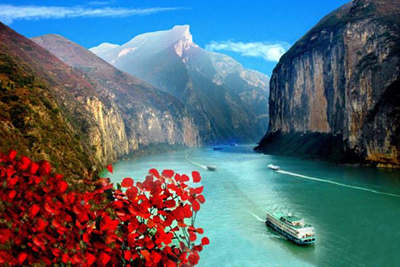As one of the world's four ancient civilizations, China has produced hundreds of emperors with its more than 5,000-year history. Some were weak and brutal and led the nation to ruin. Others served as models and led the country to the rich and powerful. So who were the greatest emperors in Chinese history? Here is a list of the top eight greatest Chinese emperors that ever ruled China. This list is arranged in chronological order according to the year of birth.
1. Qin Shi Huang (秦始皇)
Qin Shi Huang (259-210 BC), personal name Ying Zheng or Zhao Zheng, was one of the greatest Chinese emperors. A lot may be said about Emperor Qin Shi Huang. He’s considered a very brutal ruler, the most notorious of which was burning books and burying scholars alive (焚书坑儒). However ferocious he was, one thing is undeniable. Without him, China might not even be what it is now.
Qin Shi Huang established the Qin Dynasty (221–206 BC) after conquering the other warring states, and became the first emperor of an unified China.He ordered to link the border defenses of northern states Zhao, Yan and Qin to thwart invasion from northern nomads. The Qin Dynasty Great Wall was the first version of the Great Wall of China, the most well-known fortification in human history.
He was the first to create a centralized goverment that helped unify China under his control.He standardized the currency, measuring units, the length of wagon axles, and Chinese characters. In this way, exchanges were made easier between people in various places.>> Recommended: 5-day Beijing Xian Tour: Great Wall of China and Terracotta Army
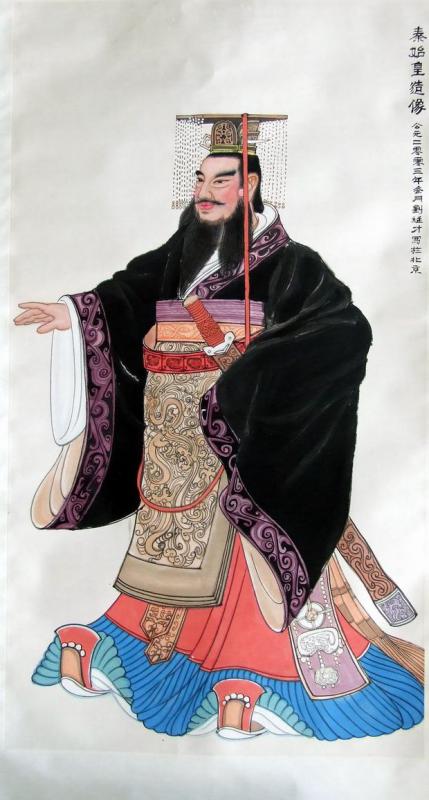
2. Emperor Wu of Han Dynasty (汉武帝)
Emperor Wu of Han (156-87 BC), born Liu Che, is considered one of the best and greatest emperors of China. During his 54-year-long reign, the Han Dynasty (202 BC - 220 AD) of China became a very powerful country, roughly equal to the Roman Empire at that time. The era of Emperor Wu was the most prosperous period of the Western Han Dynasty and one of the greatest times in the history of ancient China. It’s was also the first peak of ancient China’s feudal society.
Emperor Wu of Han Dynasty is credited for defeating powerful nomadic Xiongnu tribes, and largely expanding the Han empire’s borders in the north and west (almost doubling the size of its territory).He sent imperial envoy Zhang Qian to the West in search of military allies. The famous Silk Road was formed at this time. It greatly enriched the economic and cultural exchanges between China and other countries.Han Wudi made Confucianism the nation’s single official philosophy, and China was unified in ideology for the first time. Confucianism became the foundational feature of Chinese civilization and influenced Chinese society for over 2,000 years.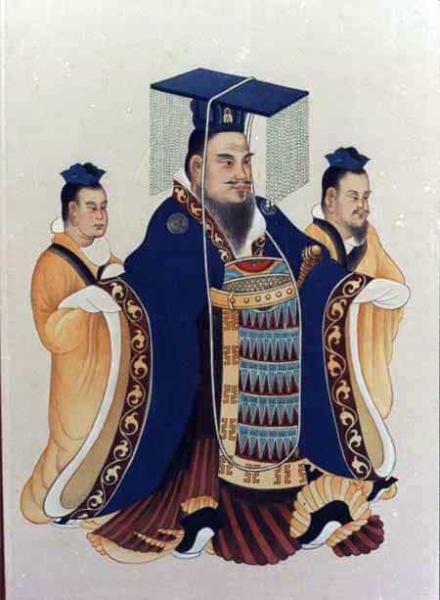
3. Emperor Wen of Sui Dynasty (隋文帝)
Emperor Wen of Sui (541-604), personal name Yang Jian (杨坚), was the founder and the first of the Sui Dynasty of ancient China. He’s also considered one of the most important and greatest Chinese emperors. He conquered the Chen Empire, established the Sui Dynasty in 589. The era of Emperor Wendi was a time of prosperity and development, comparable only to the Han Dynasty. In a manner of speaking, he made a major contribution to the reunification and stability of China. The political unity he established lasted for centuries.
Emperor Wen of Sui is credited for ending the long chaos and division of nearly 300 years, saving his people from wars, and providing peace for economic development.He set up a new government structure called the Three Departments and Six Ministries (三省六部), which centralized the political system. It was of great significance for the consolidation of the regime and social stability.Sui Wendi established the imperial examination system (Keju in Chinese) to select government officials. It broke the monopoly of hereditary blood and lineage and created chance for common people to be officials.He began work on the Grand Canal, which connects the Yangtze River in the middle of China with the Yellow River in the north. Stretching 1,794 km long, It’s the longest artificial waterway in the world.>> Recommended: 3-day Essential Hangzhou with Wuzhen & Grand Canal Tour
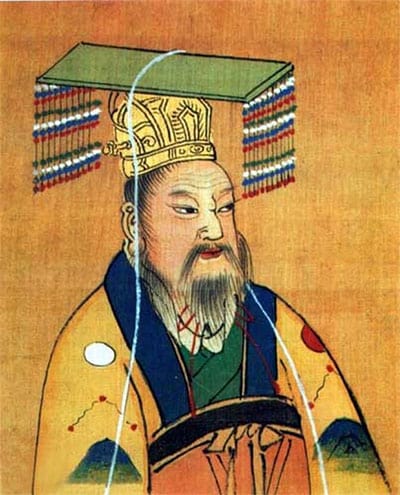
4. Emperor Taizong of Tang Dynasty (唐太宗)
Emperor Taizong of Tang (598-649), born Li Shimin (李世民), was the second emperor of China’s Tang Dynasty and is considered one of the most successful and greatest emperors of China. He’s often regarded by many historians as the greatest Chinese emperor of all time.
He ushered in a period of peace, prosperity, and development, a golden age of the Tang Dynasty known as the “Reign of Zhenguan” (贞观之治). His achievements solidly prepared the way for Tang Dynasty to emerge as the most glorious dynasty in the ancient history of China.
Emperor Taizong of Tang started to use the equal-field system (均田制). It assigned land to commoners, so they could grow crops for their own needs and pay taxes. His economic decrees brought prosperity to the people and the nation.He listened to advice and welcomed outspoken criticism from advisers and ministers, especially chancellor Wei Zheng. He would make changes accordingly if he saw the need.Tang Taizong conquered the Turkic tribes (the major threat to the Tang Dynasty at that time) and expanded the Tang territory into Central Asia. However, he adopted a friendly diplomatic policy that increased cultural communication and Silk Road trade with foreign countries.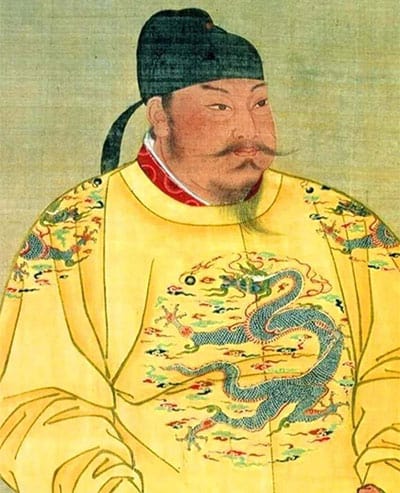
5. Emperor Taizu of Song Dynasty (宋太祖)
Emperor Taizu of Song (927-976), personal name Zhao Kuangyin (赵匡胤), was the founder and the first emperor of the Song Dynasty. He was an emperor with historical importance and one of the greatest emperors in the Chinese history. During his rule, Song Taizu devoted to the reunification of China. He successively destroyed Jingnan, Wuping, Houshu, Southern Han and the Southern Tang, completing the unification of most of the country. His concepts of statecraft and wise economic policy laid the foundation for the long prosperity of the Song Dynasty.
Emperor Taizu of Song ended the chaos of the Five Dynasties and Ten Kingdoms Period following the collapse of the Tang Dynasty.He weakened the power of military commanders to prevent possible military threats and strengthened the centralization of power government, thus stabilizing the political situation.Song Taizu created a culture that allowed freedom of discussion and internal reform. This atmosphere in court facilitated the advancement of economics, science, art, and literature.He ordered a lot of repairs to the Yellow River and other major rivers such as the Canal, Bian River, and Cai River. It also played a role in the stability of the agricultural and commercial economies.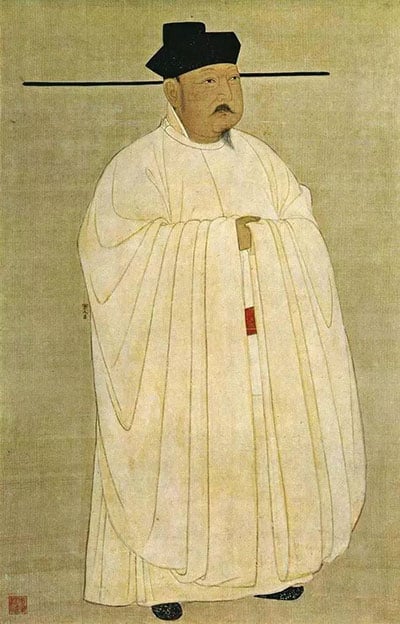
6. Yongle Emperor of Ming Dynasty (永乐皇帝)
Emperor Chengzu of the Ming Dynasty (1360-1424), personal name Zhu Di (朱棣), is better known as the Yongle Emperor. He was the third emperor of the Ming Dynasty, ruling from 1402 to 1424. He was undoubtedly the most powerful and influential emperor of the Ming Dynasty and also one of the greatest Chinese emperors. During his reign, the economy was prosperous and the country was strong. His reigh was known as "Yongle Prosperity".
Yongle Emperor ordered to build the Forbidden City. He moved the capital from Nanjing to Beijing after the palace was finished. Since then, Beijing has been the capital of China for over 600 years. Moving the capital city to Beijing helped strengthen the Ming’s northern border.Zhu Di dispatched Zheng He (郑和) to explore the world with the Chinese navy, visiting over 30 countries. It expanded the influence of Ming China and strengthened the friendship between China and foreign countries. The Silk Road of the Sea was established at that time for trade and cultural exchange.He rebuilt and expanded the Great Wall with more durable bricks and stones to stave off Mongol raids. Most of the Great Wall of China last to this day were repaired and built during the Ming Dynasty.He commissioned the compilation of the Yongle Dadian (永乐大典), the largest encyclopedia that was created in China. Unfortunately, most of the original was destroyed in the fighting at the end of the Ming Dynasty.>> Related reading: Top 6 Greatest Dynasties of China
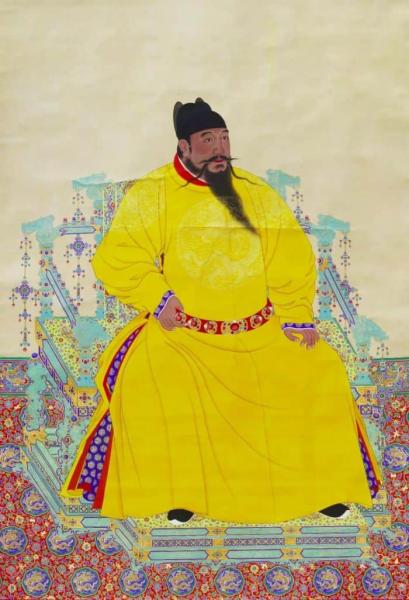
7. Kangxi Emperor of Qing Dynasty (康熙帝)
Emperor Shengzu of the Qing Dynasty (1654-1722), born Xuanye (玄烨), is also known as the Kangxi Emperor. He ruled China for 61 years, from 1662 to 1722, making him the longest-reigning emperor in the history of China. Kangxi is regarded by historians as one of the most competent and greatest Chinese emperors. During the regime of Kangxi, the country was economic prosperity and social stability. Under the rules of Kangxi and Qianlong emperors, the Chinese feudal society reached its final era of prosperity, which is known as the “Prosperous Age of Kangxi and Qianlong” (康乾盛世).
Kangxi Emperor stabilized the country from armed rebellions, defeated the Mongols, expanded the Qing Dynasty’s territory to Taiwan and Tibet, and rivaled the Russian invasion.Kangxi was frugal in court expenditures and reduced taxes many times to lighten the heavy burden on the poor.He ordered the compilation of the Kangxi Dictionary (康熙字典), the most complete dictionary of Chinese characters listing over 40,000 characters.Kangxi was open to western culture and technology. He welcomed Jesuit missionaries, allowed the propagation of Roman Catholicism in China, and employed some Jesuits as advisors. 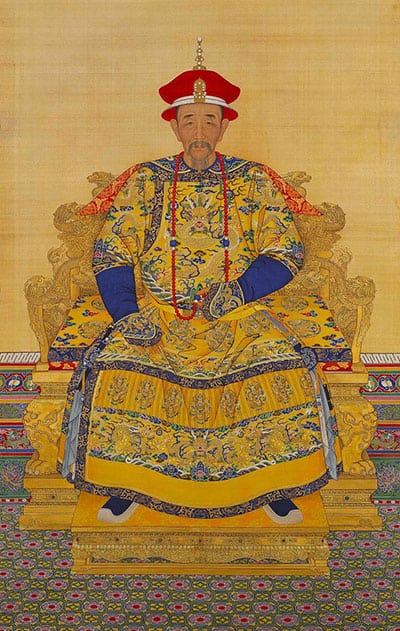
8. Qianlong Emperor of Qing Dynasty (乾隆皇帝)
Emperor Gaozong of the Qing Dynasty (1711-1799), born Aixinjueluo Hongli (爱新觉罗·弘历), is also known as the Qianlong Emperor. He was the longest-living emperor in ancient Chinese history, and he is also considered one of the most successful and influential ancient China emperors. He would have ruled longer than his grandfather (the Kangxi Emperor), but he abdicated to honor Kangxi. The 60-year reign of the Qianlong Emperor was a particularly prosperous period in China’s history. During his reign, China was the world’s richest and most populous country.
Qianlong Emperor united China as a multi-ethnic country, including the Han people, Manchus, Mongols, Tibetans, and other ethnic groups. He continued to expand China’s boundaries to neighboring countries, and China’s borders reached its greatest extent.He was also a collector of art. The number of ancient Chinese paintings and artifacts he collected was unprecedented, forming an important part of the national palace museums in Beijing and Taipei.The Siku Quanshu (四库全书) was compiled by more than 360 Chinese scholars under the direction of the Qianlong Emperor. The Siku Quanshu, literally "Complete Library of the Four Treasures", was a massive encyclopedia of Chinese classical works.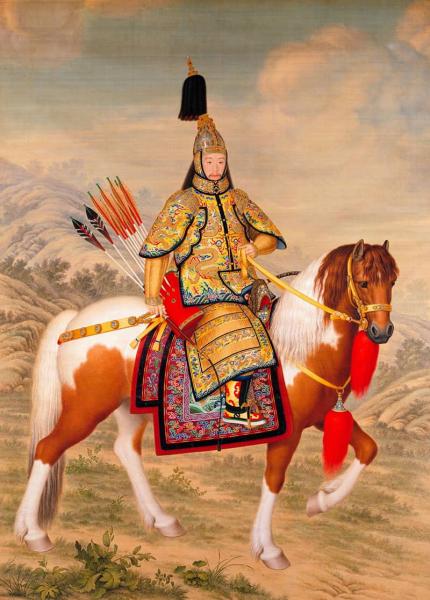
Recomended China History Tours
14 Days China History Tour on Train (Destinations: Beijing, Datong, Taiyuan, Pingyao, Xi'an, Luoyang, Nanjing, Shanghai)16 Day China History & Scenery Combo (Destinations: Beijing, Chengde, Datong, Taiyuan, Pingyao, Xi'an, Guilin, Longji, Yangshuo, Hong Kong)Further Reading
Which dynasties are best known for constructing the Great Wall?









